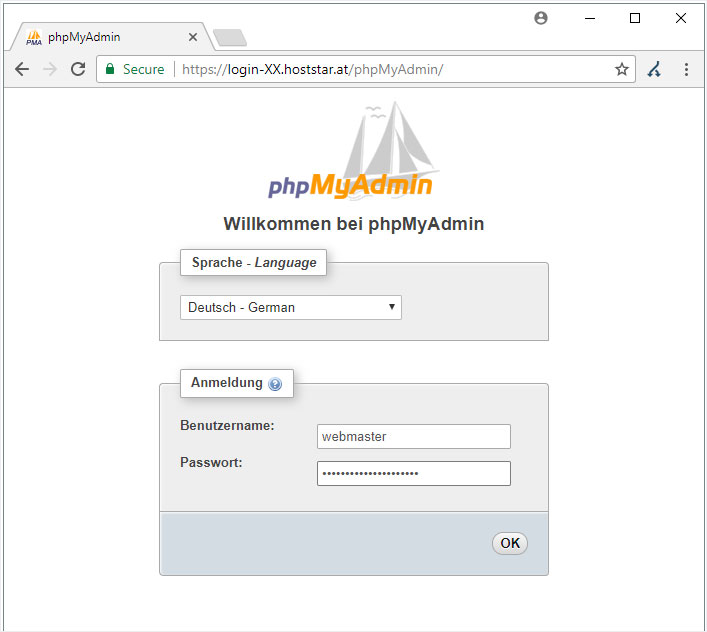

It is possible to reset the password of the MySQL root user directly from your Gandi interface, by clicking on the “ Reset the password” button. Resetting the ‘root’ User Password for MySQL ¶ You ca also add other parameter files in /lamp0/etc/myqsql/ so long as the extension of each file is “.cnf”.įor your changes to take effect, you must restart your web hosting. When you are satisfied with your changes, upload the file to your web hosting, replacing the original. Values that are not changes will remain at the default values.
PHPMYADMIN LOGIN PAGE DOWNLOAD
To modify the configuration, access your web hosting via SFTP and download the file /lamp0/etc/mysql/custom.cnf.Įdit the file locally by adding the parameters you want to modify. However, certain parameters cannot be modified in order to guarantee the proper functioning of the web hosting. It is possible to modify some configuration parameters by editing the custom.cnf file on your web hosting.

Consequently, we recommend creating a specific directory for MySQL exports in order to gather them together in the same location. Note that only the /srv/data/tmp and /srv/data/home directories can be written to - with the exception of virtualhosts. To import your database for use with Gandi’s Web Hosting, go to your phpMyAdmin interface and click on the “ Import” tab. Click the link “ Add a new User” and fill out the form to create a user. To do this, use the “ Privileges” option once you are in the administration page of the database (click on the name of the database to go there). Now you will want to create your users for the database. Next, choose a name for your database and finish by clicking on “ Create”. To create a database, log into your phpMyAdmin interface from your Web Hosting admin page and then once in, click on the “ Databases” tab. You will then be logged into PHPmyAdmin and can manage your databases from there. So type root as the user, leave the password empty, and click on “ Go”. When done, you will then see the phpMyAdmin login page.īy default the phpMyAdmin user is root and there is no password. You can access your Web Hosting database from the Administration section of your web hosting’s management page.Ĭlick the “ Go to phpMyAdmin” button in the “ Database” widget and enter your web hosting user id and web hosting password to authenticate with your Control Panel.
PHPMYADMIN LOGIN PAGE HOW TO
How to Use phpMyAdmin to Manage Your Database ¶

You’ll find instructions on how to perform these and other management tasks below. You are encouraged to create new users with strong credentials and new databases for your websites or application. A default user ( root) and database ( default_db) exist so you can quickly test your connection and perform management tasks. The preferred connection method is through the Unix socket located at the path detailed below. The MySQL database service is available on localhost and it’s not possible to access the service from outside of the web hosting. This article describes how to access, create and manage MySQL databases on Web Hosting. The MySQL database service can be managed from the SSH emergency console or from a web interface. You are only limited by the disk size, which you can increase at any time up to 1 TB. You can create as many databases and users you want in your web hosting. MySQL versions 5.7 (Percona) and 8.0 (Percona) are currently available on Web Hosting and can be used with all languages. It powers popular application frameworks such as WordPress, Drupal or Magento and it’s the go-to database for many web developers. MySQL is the most popular database system on the Web. Resetting the ‘root’ User Password for MySQL Managing Your MySQL Database from the Command Line How to Use phpMyAdmin to Manage Your Database


 0 kommentar(er)
0 kommentar(er)
